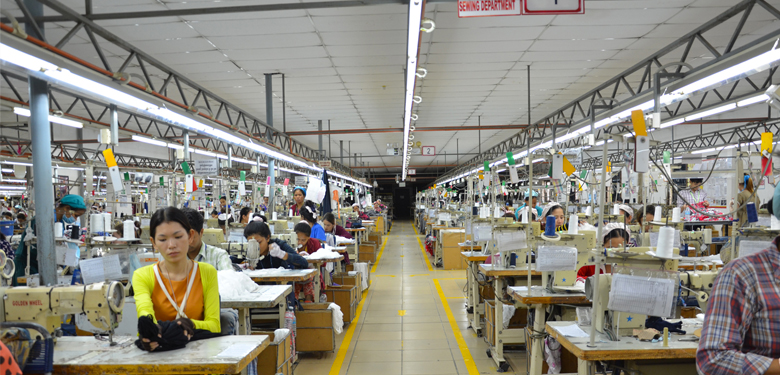
What works? Industry solutions to workplace violence based on global evidence
The garment industry represents 80% of Cambodia’s export earnings, making it an important pillar of the nation’s economy. With women comprising 85% of the workforce, the issue of sexual harassment – which affects one in three women workers – can have high economic costs to the industry. The 2017 report: ‘I know I cannot quit.’ The Prevalence and Productivity Cost of Sexual Harassment to the Cambodian Garment Industry found that by investing more in workplace safety and worker wellbeing, garment factory owners could save US$ 89 million every year which is lost to absenteeism, presenteeism and worker turnover as a result of sexual harassment.
This is not an issue unique to Cambodia. The United Nations estimates the total cost of violence against women worldwide to be US$ 1.5 trillion – more than Australia’s entire economy. The recent publication Counting the Cost provides evidence that the benefits of investing in programs to prevent violence against women far outweigh the costs.
However, even for businesses that want to invest in creating a safe and respectful environment for their workers, this leads to a subsequent challenge of how can companies effectively prevent and respond to sexual harassment in the workplace?
Sexual harassment in the workplace is greatly underreported, which impacts organizational capacity to assess its prevalence and measure the effectiveness of interventions. For businesses operating in a global environment, national level leadership and HR teams may have an excellent understanding of the local context, but less experience when it comes to developing effective strategies for addressing workplace violence.
To address this, CARE International has reviewed existing evidence on effective approaches to reducing sexual harassment in the workplace. Using systematic review methods and pre-defined inclusion criteria, the review draws on learnings from:
- Organisational development literature on workplace change, social psychology and public health evidence
- Evidence from development studies to address issues of context and culture
WHAT WORKS? Reducing sexual harassment in the workplace: A rapid review of evidence argues any effort aimed at addressing sexual harassment in the workplace must employ a ‘whole of organisation’ approach. Designing a holistic approach is dependent on strong corporate policies, including establishing a comprehensive complaint management approach and training for staff.1
CARE International has put together a shortlist of promising solutions that could be applied easily in a factory setting where there are time constraints. Drawing on decades of experience working with the manufacturing sector, CARE International has developed meaningful ways to improve worker wellbeing whilst delivering business outcomes.
Promising practices identified include:
Shifting Workplace Norms
Addressing sexual harassment in the workplace requires shaping an organisation’s core beliefs, attitudes, and norms
Engaging Leadership
Preventing harassment in the workplace is closely connected to organisational leaders taking a proactive stance to send a clear message about what behaviour will not be tolerated
Developing Progressive Policies
Sexual harassment policies and the consequences of violating such policies send clear and explicit messages about an organisation’s stance on sexual harassment, and positively affect employee behaviour
Building Skills & Capability
Training can increase employees’ awareness of what is inappropriate and how to report misconduct, and improve attitudes towards sexual harassment
More in-depth analysis of how companies can tackle sexual harassment is shared in the full evidence review, available at care.org.au from 18 September 2018.
WHAT WORKS? Reducing sexual harassment in the workplace: A rapid review of evidence will be launched at the CSR Asia Summit 2018 in Hong Kong. CARE will be exhibiting at the event – visit their booth to learn more.
1. Gruber J E (1998) ‘The Impact of Male Work Environments and Organizational Policies on Women’s Experiences of Sexual Harassment’, Gender and Society, Vol 12 (3) 301-320.at 316.